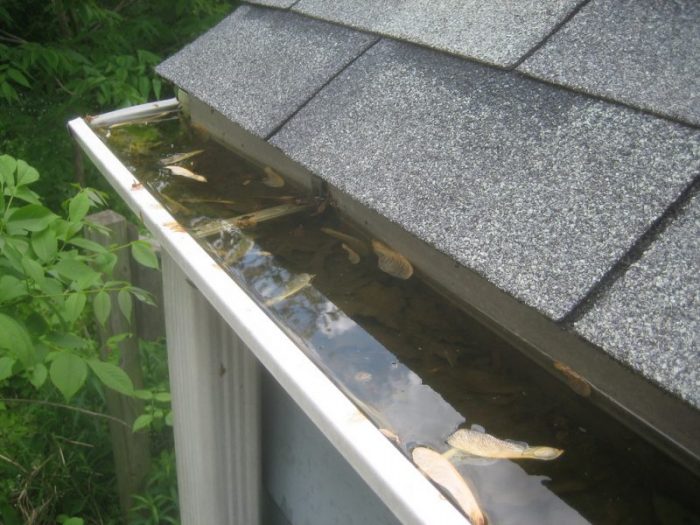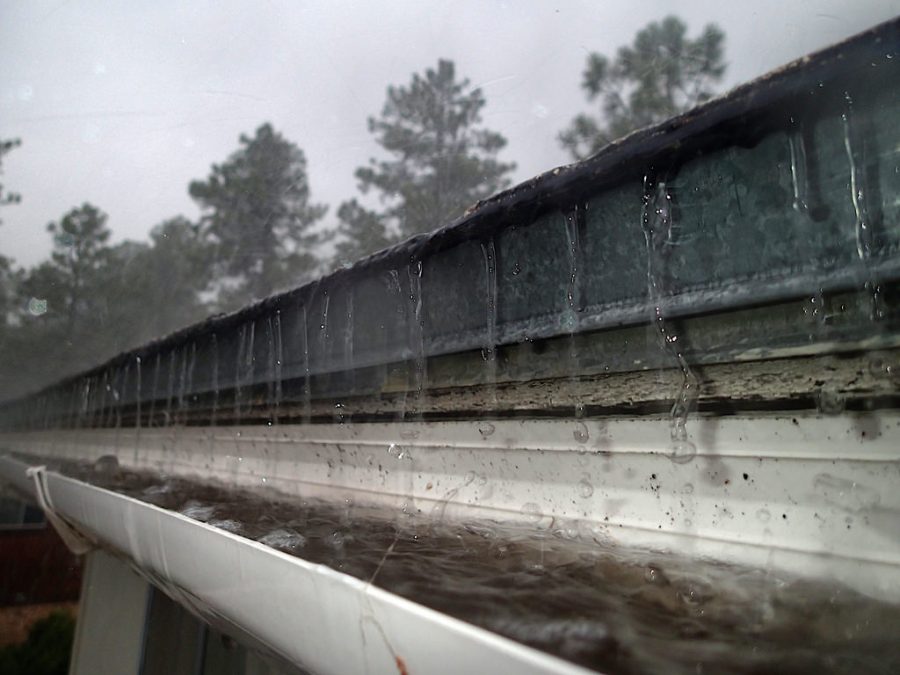A Step-by-Step Guide to Cleaning Your Gutters and Downspouts
 Having a proper gutter and downspout system is important for every home – and nearly all of them have such a system installed. It is a very important part of a house that prevents leaks and water damages to roofs and basements. They help divert the water away from your home and serve to prevent water erosion that can be caused by heavy rains and storms. Even though it is a fairly simple system, it does require some regular maintenance and inspections. If you want to have a functioning gutter system and keep it in great working condition, you should take some time once or twice a year to inspect it and clean it. Apart from preventing damages, this will also prolong its lifespan so you won’t require a full gutter replacement any time soon. Take a look at this guide, follow the steps described and you will have a clean and functioning gutter system, ready for the rainy season.
Having a proper gutter and downspout system is important for every home – and nearly all of them have such a system installed. It is a very important part of a house that prevents leaks and water damages to roofs and basements. They help divert the water away from your home and serve to prevent water erosion that can be caused by heavy rains and storms. Even though it is a fairly simple system, it does require some regular maintenance and inspections. If you want to have a functioning gutter system and keep it in great working condition, you should take some time once or twice a year to inspect it and clean it. Apart from preventing damages, this will also prolong its lifespan so you won’t require a full gutter replacement any time soon. Take a look at this guide, follow the steps described and you will have a clean and functioning gutter system, ready for the rainy season.
When Is the Best Time to Clean the Gutters?
The process of cleaning your gutters and downspouts will be much easier when the debris is dry because when it gets soaked from the rain it will be heavier and the process a bit messier. Therefore, it is best to check the weather forecast and wait for a few dry days in a row. 
Why Should You Clean Them and How Often?
A detailed inspection of your gutters is important in order to see if there are any clogs that are preventing the water from flowing freely throughout the system. A clog can be caused by many different things and types of debris, such as leaves, bird feathers, and even pine needles. When the clog prevents the water from flowing through, the water builds up in that place, and such stagnant water can lead to greater damages to your property, to the gutter system so that it requires repairs or complete replacement, and it can also turn into a breeding ground for mosquitos. Apart from that, stagnant water can also flow over the side which can lead to erosion issues and pooling. When water starts pooling into the foundations of your home, it can lead to different foundation damages and to basement flooding. For best results and a functioning system, it is recommended to inspect and clean your gutters and downspouts twice a year, for example every fall and spring when the weather conditions are optimal for this kind of work. This process is simple enough to be done on your own, but you can also choose to hire a professional to help you with it. If you’ve decided to do it yourself, follow the tips and steps in this guide and your gutters should be in top shape.
What Tools Will You Need?
This process will require a few simple tools that most homeowners already have around their house or in the garage. They include a couple of buckets and wire hooks, a sturdy ladder, a trowel, a garden hose with a gutter cleaning attachment or a nozzle, and some protective work gloves, a sturdy pair of shoes and safety glasses. Having proper gear and shoes is very important here because it involves climbing the ladder and working on the roof where inadequate shoes can lead to slips and falls. Additional safety tips:
- Working near power lines can be very dangerous so always try to avoid them, or be extra careful around them. You can also always ask for professional help if you don’t feel comfortable working near them.
- When it comes to the type of ladder you use, whenever possible use a step ladder placed on level solid ground and try not to climb all the way to the top. If you use extension ladder, take additional precautions, have someone hold them on the ground or tie them with a rope to the gutter spikes.
Six Simple Steps for Clean Gutters and Downspouts
- Step one
Using two buckets while cleaning your gutters and downspouts will make your job much easier, so the first step would be to carry them up the ladder one at a time and hook them using wire hooks. You can use one bucket for the debris you collect and the other for your tools.
- Step two
Once you have everything you need you can put on some gloves and start cleaning. It is best to begin near the downspout and pull out any big pieces of debris or large clumps, twigs, or leaves. If there are any smaller pieces that are packed in, you can clean those out using a trowel.
- Step three
Third step includes cleaning out the downspout strainers, for those who have them. And for those who don’t, we highly recommend adding them, as they are very simple to install and will prevent large chunks of debris from clogging your downspout. Simply remove the strainers and clean them with your hands or water.
- Step four
After you’ve removed all the bigger and larger pieces and clumps of debris, it is time to hose down your gutters to wash all the rest. Take your garden hose and start washing from the end that is opposite the downspout, so that the water can drain down the downspout.
- Step five
If the water isn’t draining properly and flowing out, then there is probably a clog in the downspout which you can easily resolve in this step. First, you have to check if your downspout continues underground. If that is the case, then you will have to remove its bottom, so that you don’t send the clog into the underground pipes. Use a screwdriver to loosen the bands and remove the bottom. If your downspout is above ground then simply continue to this part. Check to see if the nozzle on your hose can fit into the downspout. If it can’t, then use a plumber’s snake for this part. Put the nozzle or the snake into the downspout, from the bottom up, set it at full pressure, and turn on the water. This should take care of any clogs and remaining debris.
- Step six
To make sure everything is properly and thoroughly cleaned, and once all the clogs have been resolved, go back to your roof and your gutter, and flush it out one more time. Again, take your garden hose and start washing from the end that is opposite the downspout. This will take care of any leftover debris and dirt and ensure that your gutter system is functional.
Conclusion
Cleaning your gutters and downspouts is a simple enough process if you’ve taken all the necessary precautions and made sure you are safe. The process is quick yet very helpful and beneficial to your home, as it can prevent greater damages and leaks. If you follow these six simple steps, your home can also be safe and protected from damages caused by rains and storm. This article is presented you by Harper Special Services, the best restoration company in Savannah, GA